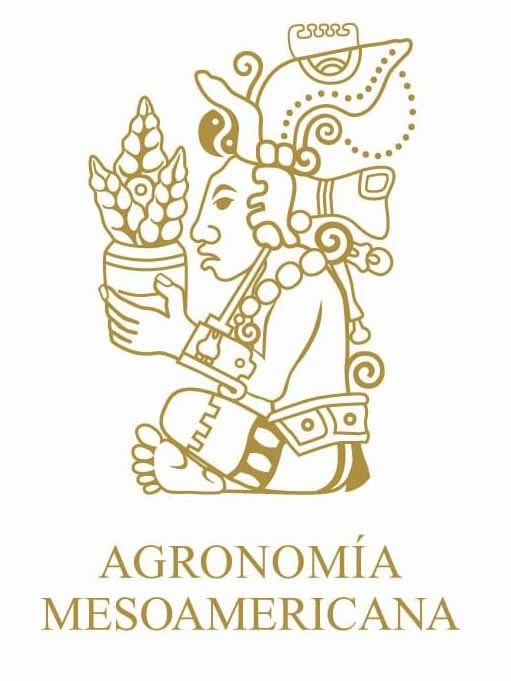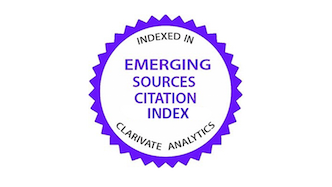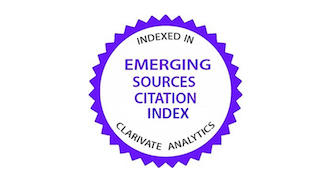Repellent effect of essential oils on the mite Tetranychus urticae Koch (Acari: Tetranychidae)
DOI:
https://doi.org/10.15517/qwj4k754Keywords:
IPM of mites, spider mites, secondary metabolites, plant protectionAbstract
Introduction. Various plant extracts are used in agriculture to reduce the impact on arthropod pests. However, there are few works that indicate the toxic or repellent action of essential oils of cinnamon, citronella and ginger on populations of phytophagous mites such as Tetranychus urticae. Objective. To evaluate the repellent effect of commercial grade essential oils of cinnamon (Cinnamomum zeylanicum), citronella (Cymbopogon winterianus) and ginger (Zingiber officinale), on a population of the mite Tetranychus urticae on sweet chili plants (Capsicum annuum) under in vitro conditions. Materials and methods. The research was conducted in the Acarology Laboratory at the Crop Protection Research Center, School of Agronomy, University of Costa Rica, located in San Pedro de Montes de Oca, Costa Rica, between October and November 2023. Four different concentrations (1%, 2%, 3%, and 4%) of each essential oil (cinnamon, citronella, and ginger) were tested at a volume of 333 µL per leaf. The repellent activity was quantified through a restricted choice test using paper bridges. Evaluations were conducted 24 and 48 hours after application. The experimental design was a randomized complete block design, and data analysis was performed using a Generalized Linear Model. Results. The three oils and their respective concentrations showed repellent action greater than 60% except for citronella oil at 2%. A high concentration did not always show the greatest repellency against mites, although this changed according to the essential oil used. Conclusion. This research showed that cinnamon, citronella and ginger oils have repellent properties against Tetranychus urticae, and demonstrates its potential as an alternative for the management of this pest.
References
Adesanya, A. W., Lavine, M. D., Moural, T. W., Lavine L. C., Zhu, F., & Walsh, D. B. (2021). Mechanisms and management of acaricide resistance for Tetranychus urticae in agroecosystems. Journal of Pest Science, 94, 639-663. https://doi.org/10.1007/s10340-021-01342-x
AdeyeOluwa, T.E. (2023). Essential oil of ginger: Effect of cultivation and uses. In P. Kaushik, & R. S. Ahmad (Eds.), Ginger – Cultivation and use. IntechOpen. https://doi.org/10.5772/intechopen.106682
An, H., & Tak, J. H. (2022). Miticidal and repellent activity of thirty essential oils and their synergistic interaction with vanillin against Tetranychus urticae Koch (Acari: Tetranychidae). Industrial Crops and Products, 182, Article 114872. https://doi.org/10.1016/j.indcrop.2022.114872
Ata, M. M. I., El Shahawy, G. Z., Fawzy, M. H., Abdel Baki, A. A. S., Al Quraishy, S., Hassan, A. O., & Abdel Tawab, H. (2023). Bioefficacy of essential oils emulsion and predatory mite, Euseius scutalis (Athias-Henriot) (Acari: Phytoseiidae) for the management of citrus brown mite, Eutetranychus orientalis (Klein) (Acari: Tetranychidae). Journal of King Saud University-Science, 35(2), Article 102471. https://doi.org/10.1016/j.jksus.2022.102471
Attia, S., Grissa, K. L., Mailleux, A. C., Lognay, G., Heuskin, S., Mayoufi, S., & Hance, T. (2011). Effective concentrations of garlic distillate (Allium sativum) for the control of Tetranychus urticae (Tetranychidae). Journal of Applied Entomology, 136(4), 302-312. https://doi.org/10.1111/j.1439-0418.2011.01640.x
Attia, S., Grissa, K. L., Lognay, G., Bitume, E., Hance, T., & Mailleux, A. C. (2013). A review of the major biological approaches to control the worldwide pest Tetranychus urticae (Acari: Tetranychidae) with special reference to natural pesticides: Biological approaches to control Tetranychus urticae. Journal of Pest Science, 86, 361-386. https://doi.org/10.1007/s10340-013-0503-0
Baker B. P., & Grant J. A. (2017). Cinnamon & Cinnamon Oil Profile. Cornell University Library. https://hdl.handle.net/1813/56117
Chaves, M. A. (2018). Registro de nuevos agroquímicos: limitante para la productividad y la competitividad de la agricultura y la agroindustria azucarera costarricense. LAICA-DIECA. https://servicios.laica.co.cr/laica-cv-biblioteca/index.php/Library/download/jYeBZrcaeneOgdpwrdMmOlfFNNVWZpCn
Choi, W. I., Lee, S. G., Park, H. M., & Ahn, Y. J. (2004). Toxicity of plant essential oils to Tetranychus urticae (Acari: Tetranychidae) and Phytoseiulus persimilis (Acari: Phytoseiidae). Journal of Economic Entomology, 97(2), 553-558. https://doi.org/10.1093/jee/97.2.553
da Camara, C. A., Akhtar, Y., Isman, M. B., Seffrin, R. C., & Born, F. S. (2015). Repellent activity of essential oils from two species of Citrus against Tetranychus urticae in the laboratory and greenhouse. Crop Protection, 74, 110-115. https://doi.org/10.1016/j.cropro.2015.04.014
da Silva, M. R. M., & Ricci-Júnior, E. (2020). An approach to natural insect repellent formulations: from basic research to technological development. Acta Tropica, 212. Article 105419. https://doi.org/10.1016/j.actatropica.2020.105419
dōTERRA. (s.f.). Aceite esencial de canela. Recuperado el 24 de octubre, 2024. https://www.doterra.com/US/es/p/cinnamon-bark-oil
dōTERRA. (s.f.). Aceite esencial de citronella. Recuperado el 24 de octubre, 2024. https://www.doterra.com/US/es/p/citronella-oil
dōTERRA. (s.f.). Aceite esencial de jengibre. Recuperado el 24 de octubre, 2024. https://www.doterra.com/MX/es_MX/p/ginger-oil
Garay, J., Brennan, T., & Bon, D. (2020). Review of essential oils: a viable pest control alternative. International Journal of Ecotoxicology and Ecobiology, 5(2), 13-22. https://doi.org/10.11648/J.IJEE.20200502.11
Herrera Gorocica, Á. M., Sánchez Contreras, M.A., Hernández Núñez, E., Ballina Gómez, H. S., Latourniere Moreno, L., & Ruiz Sánchez, E. (2023). Aceites esenciales para el manejo de Bemisia tabaci y Tetranychus urticae. Avances en investigación agropecuaria, 27, 14-15. https://doi.org/10.53897/RevAIA.23.27.14
Isman, M. B. (2000). Plant essential oils for pest and disease management. Crop protection, 19(8-10), 603-608. https://doi.org/10.1016/S0261-2194(00)00079-X
Kuang, C., Cao, J., Zhou, Y., Zhang, H., Wang, Y., & Zhou, J. (2023). Tick acetylcholinesterases mediate the repellent effect of cinnamaldehyde, a primary compound found in cinnamon oil. Ticks and Tick-borne Diseases, 15(6), Article 102404. https://doi.org/10.1016/j.ttbdis.2024.102404
Li, Hongli., Cui, Hongchun., Zheng, Xuxia., Yu, Jizhong., Mao, Yuxiao., Huang, Haitao. (2019). New application of cinnamon essential oil as agricultural acaricide.
López Marín, L. M. (2017). Manual técnico del cultivo del tomate (Solanum lycopersicum). Instituto Nacional de Innovación y Transferencia de Tecnología Agropecuaria. https://www.mag.go.cr/bibliotecavirtual/F01-10921.pdf
Martínez Huasanche, F., Rodríguez Maciel, J. C., Santillán Galicia, M. T., Lagunes Tejeda, Á., Rodríguez Martínez, D., Toledo Hernandez, R., Guzmán Franco, A. & Silva Aguayo, G. (2021). Rapid bioassay for detection of acaricide resistance in Tetranychus urticae (Acari: Tetranychidae). Journal of Entomological Science, 56(2), 246-255. https://doi.org/10.18474/0749-8004-56.2.246
Mendoza Léon, D., Dobronski Arcos, J., Vásquez Freytez, C., Frutos Pinto, V., & Paredes Carreño, S. (2019). Control de Tetranychus urticae Koch (Acari: Tetranychidae) con Bacillus subtilis en hojas de fresa (Fragaria vesca). Agronomía Costarricense, 43(1), 125-133. http://dx.doi.org/10.15517/rac.v43i1.35676.
Migeon, A., Nouguier, E., & Dorkeld, F. (2011). Spider Mites Web: a comprehensive database for the Tetranychidae. In M. Sabelis, & J. Bruin (Eds.), Trends in acarology (pp. 557-560). Springer, Dordrecht. https://doi.org/10.1007/978-90-481-9837-5_96
Mota Sánchez, D., & Wise J.bC. (2024). The Arthropod Pesticide Resistance Database. Michigan State University. Recuperado el 24 de octubre, 2024. http://www.pesticideresistance.org
Neira, C. M., Heinsohn P. P., Carrillo, Ll. R., Báez, M. A., & Fuentealba, A., J. (2004). Efecto de aceites esenciales de lavanda y laurel sobre el ácaro Varroa destructor Anderson & Truemann (Acari:Varroidae). Agricultura Técnica, 64(3),238-244. https://dx.doi.org/10.4067/S0365-28072004000300003
Patel, M., & Prajapati, B. G. (2024). Cinnamon oil. An insight into pharmacological and pharmaceutical potential. In S. Singh, P Kumar Chaurasia, & S. Lata Bharati (Eds.), Pharmacological aspects of essential oils. Current and future trends (pp. 162-174). CRC Press. https://doi.org/10.1201/9781003389774-12
Posit team (2024). RStudio: Integrated Development Environment for R. Posit Software. http://www.posit.co/
R Core Team (2024). R: A Language and Environment for Statistical Computing. R Foundation for Statistical Computing. https://www.R-project.org/
Regnault-Roger, C., Vincent, C., & Arnason, J. T. (2012). Essential oils in insect control: low-risk products in a high-stakes world. Annual Review of Entomology, 57(1), 405-424. https://doi.org/10.1146/annurev-ento-120710-100554
Santamaria, M. E., Arnaiz, A., Rosa-Diaz, I., González-Melendi, P., Romero-Hernandez, G., Ojeda-Martinez, D. A., Garcia, A., Contreras, E., Martinez, M., & Diaz, I. (2020). Plant defenses against Tetranychus urticae: mind the gaps. Plants, 9(4), Article 464. https://doi.org/10.3390/plants9040464
Servicio Fitosanitario del Estado. (s.f.). Sistema de Insumos y Fiscalización. Recuperado mayo 30, 2025 de https://app.sfe.go.cr/SFEInsumos/aspx/Seguridad/Home.aspx
Sharma, A., Shukla, A., Attri, K., Kumar, M., Kumar, P., Suttee, A., Singh, G., Barnwal, R. P., & Singla, N. (2020). Global trends in pesticides: A looming threat and viable alternatives. Ecotoxicology and Environmental Safety, 201. Article 110812. https://doi.org/10.1016/j.ecoenv.2020.110812
Sheasha, A., Hosny, A. E., Keratum, A., Abdelrhman, H., Al-Harbi, N. A., Al-Qahtani, S. M., & Abdelaal, K. (2023). Efficacy of some plant essential oils against two spotted spider mite Tetranychus urticae under laboratory conditions. Polish Journal of Environmental Studies, 32(4), 3291-3298. https://doi.org/10.15244/pjoes/162615
Tak, J. H., & Isman, M. B. (2017). Acaricidal and repellent activity of plant essential oil-derived terpenes and the effect of binary mixtures against Tetranychus urticae Koch (Acari: Tetranychidae). Industrial Crops and Products, 108, 786-792. https://doi.org/10.1016/j.indcrop.2017.08.003
Villegas Elizalde, S.E., Rodríguez Maciel, J.C., Anaya Rosales,S., Sánchez Arroyo, H., Hernández Morales, J., & Bujanos Muñóz R. (2010). Resistencia a acaricidas en Tetranychus urticae (Koch) asociada al cultivo de fresa en Zamora, Michoacán, México. Agrociencia 44, 75–81. https://agrociencia-colpos.org/index.php/agrociencia/article/view/777/777
Xu, D., He, Y., Zhang, Y., Xie, W., Wu, Q., & Wang, S. (2018). Status of pesticide resistance and associated mutations in the two-spotted spider mite, Tetranychus urticae, in China. Pesticide Biochemistry and Physiology, 150, 89-96. https://doi.org/10.1016/j.pestbp.2018.07.008
You, C. X., Zhang, W. J., Guo, S. S., Wang, C. F., Yang, K., Liang, J. Y., Wang, Y., Geng, Z. F., Du, S. S., & Deng, Z. W. (2015). Chemical composition of essential oils extracted from six Murraya species and their repellent activity against Tribolium castaneum. Industrial Crops and Products, 76, 681-687. https://doi.org/10.1016/j.indcrop.2015.07.044
Zhang, L., Teng, Q., Guo, J., Zou, M., Xue, Q., Zhao, J., & Li, Y. (2024). Efficacy and underlying mechanisms of the essential oil derived from Rosmarinus officinalis against Aleuroglyphus ovatus (Acari: Acaridae). International Journal of Acarology, 50(3), 209-221. https://doi.org/10.1080/01647954.2024.2311668
Downloads
Published
License
Copyright (c) 2025 Manuel Quirós-Monge, Iván León-González, Pamela Murillo-Rojas (Autor/a)

This work is licensed under a Creative Commons Attribution-NonCommercial-NoDerivatives 4.0 International License.
1. Proposed policy for open access journals
Authors who publish in this journal accept the following conditions:
a. Authors retain the copyright and assign to the journal the right to the first publication, with the work registered under the attribution, non-commercial and no-derivative license from Creative Commons, which allows third parties to use what has been published as long as they mention the authorship of the work and upon first publication in this journal, the work may not be used for commercial purposes and the publications may not be used to remix, transform or create another work.
b. Authors may enter into additional independent contractual arrangements for the non-exclusive distribution of the version of the article published in this journal (e.g., including it in an institutional repository or publishing it in a book) provided that they clearly indicate that the work was first published in this journal.
c. Authors are permitted and encouraged to publish their work on the Internet (e.g. on institutional or personal pages) before and during the review and publication process, as it may lead to productive exchanges and faster and wider dissemination of published work (see The Effect of Open Access).































